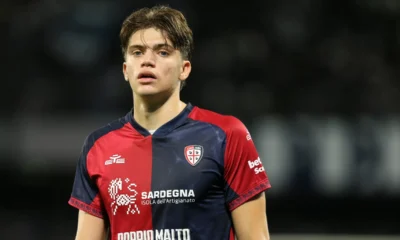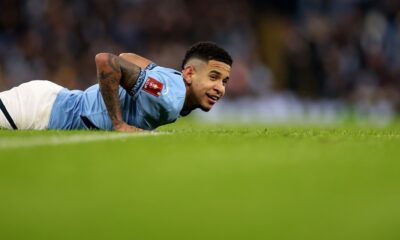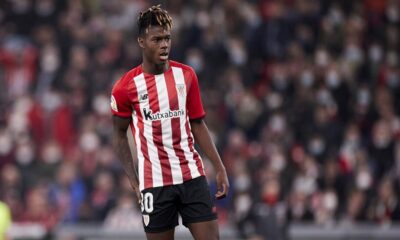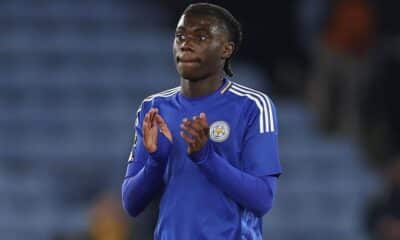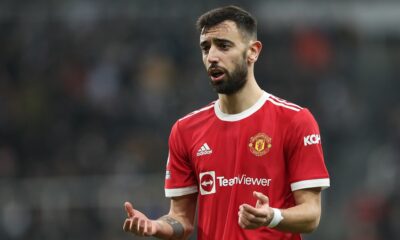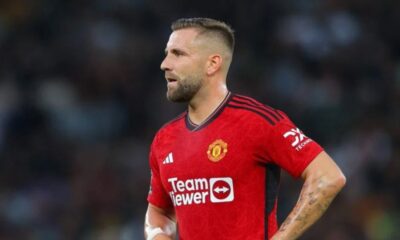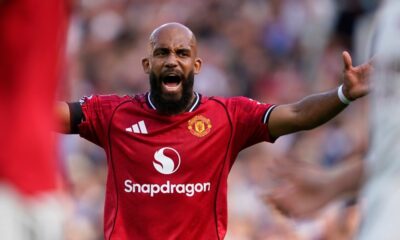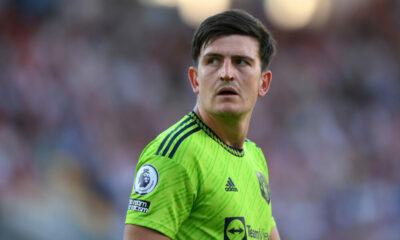Man Utd General News
Profile of a Legend: Farewell to the Babyfaced Assassin
Ole Gunnar Solskjaer took charge of Manchester United Reserves for the final time last night before returning to Norway to manage old club Molde in the new year. And he went out with a bang as United thrashed Newcastle’s Reserves 5-1. It brings to an end 14 and a half years of terrific service to Manchester United for the 37 year old and he leaves as a true club legend. But what is it that makes him held in such high esteem? It’s certainly about a lot more than just that goal at the Camp Nou…
Solskjaer’s hero status was of course first assigned on that night in Barcelona in May 1999. Scoring the last minute winner in a Champions League Final is a sure-fire way to get noticed on the terraces, but he had impressed the fans long before that night. After signing from Molde for a bargain £1.5million in the summer of 1996, Ole made his debut and, naturally, scored. He gained a lot of attention in his first few months at the club, not least because no one had a clue how to pronounce his name. But his goals and general contribution soon fixed that. He finished the season as United’s top scorer: an amazing feat considering he played with Eric Cantona and Andy Cole and the fact that it was his first season in England, or away from Norway at all.
Solskjaer continued to impress with his goals for several years, but the season that he will be remembered for is certainly 1998/99, not only because of United’s amazing Treble, but because of his own contributions to the success. Ironically enough, it was during the summer of 1998 that Solskjaer had the chance to leave the club after a bid was accepted from Tottenham. With three other world class strikers on the books in Cole, Teddy Sheringham and Dwight Yorke, and an increasing knack of scoring off the bench, he was facing the possibility of not starting games. But Solskjaer refused the move and was determined to fight for his place in the team, giving an early indication of his incredible sense of loyalty.
It was this season that at least 3 of Solskjaer’s career highlights occurred. United had drawn Liverpool in the FA Cup 4th Round at Old Trafford, and were staring at defeat after Michael Owen put the visitors ahead. But with 2 minutes left on the clock, United grabbed an equaliser through Dwight Yorke. Deep into injury time, Solskjaer popped up to score the crucial winner, sending Old Trafford into ecstasy. He also made Premier League history in the game at Nottingham Forest, coming off the bench to remarkably score 4 goals in 12 minutes to wrap up an 8-1 victory. And of course that unforgettable moment in Barcelona. Good job he didn’t leave then!
Despite rarely being a regular starter, Solskjaer continued to play his role perfectly in the next few years, at one point shifting David Beckham from the right wing and making the position his own. It was then that his injury torment was to begin. His first major knee injury occurred in September 2003, putting him out of action until February of the next year. He still played his part in the FA Cup winning run, including the final against Millwall. But he was forced to undergo severe knee surgery that summer which ruled him out for nearly 18 months. There were serious doubts over whether Solskjaer could ever return. But it was his own positive attitude that undoubtedly saw him through this tough period. During his time out the United fans paid their own tribute to him, unveiling a banner at the Stretford End showing their feelings for him – 20LEGEND.
His first action was for the reserves in December of 2005, where a crowd of almost 3000 showed up to support the striker – an astronomical attendance for a reserve fixture. The biggest cheer of the season came when Ole typically came on from the bench in his first league game back at Birmingham later that month. His comeback was handled steadily and it was only during the 2006/07 season that Ole began to make regular appearances for the first team. His first Premier League goal in over 3 years was greeted with tremendous joy by the United fans at the game at Charlton, where Solskjaer responded by bowing in acknowledgment of the fans’ support.
Despite the assumption that after so long out of the game and his increasing age Solskjaer would not be up to the task of playing for Manchester United, he made a brilliant contribution of 11 goals in that season. Further knee niggles would continue to bother him, and he underwent minor knee surgery again in the summer of 2007. But this time there was no way back and Solskjaer decided to retire in August.
As part of his last contract with United, Solskjaer took up a coaching role, helping teach the Academy players and passing on his expertise to the first team strikers. He was also made an ambassador for the club, flying the United flag around the world and helping with charity work. His love and desire for United is what the fans love him for. During the Glazer takeover, several protest groups were formed in opposition to the debt the deal would put the club in. Despite being a United player at the time, Solskjaer joined one of these, Shareholders United, along with Eric Cantona and made his stance clear when others avoided the subject entirely. This only endeared him more to the masses of United fans.
In the summer of 2008, Solskjaer took up the role of Reserves coach alongside Warren Joyce and has been hugely successful. He leaves with a record of: Played 68, Won 43, Drawn 26, Lost 9 in addition to winning last season’s Premier League Reserve North and the Reserves Play-Off. All United fans can do now is wish him fantastic success as he begins his top flight managerial career, and who knows, maybe one day soon he will return to United as the main man there…
What are your fondest memories of Solskjaer at Manchester United? Do you think he can be as successful a manager as he was a player? Please leave your comments below.




